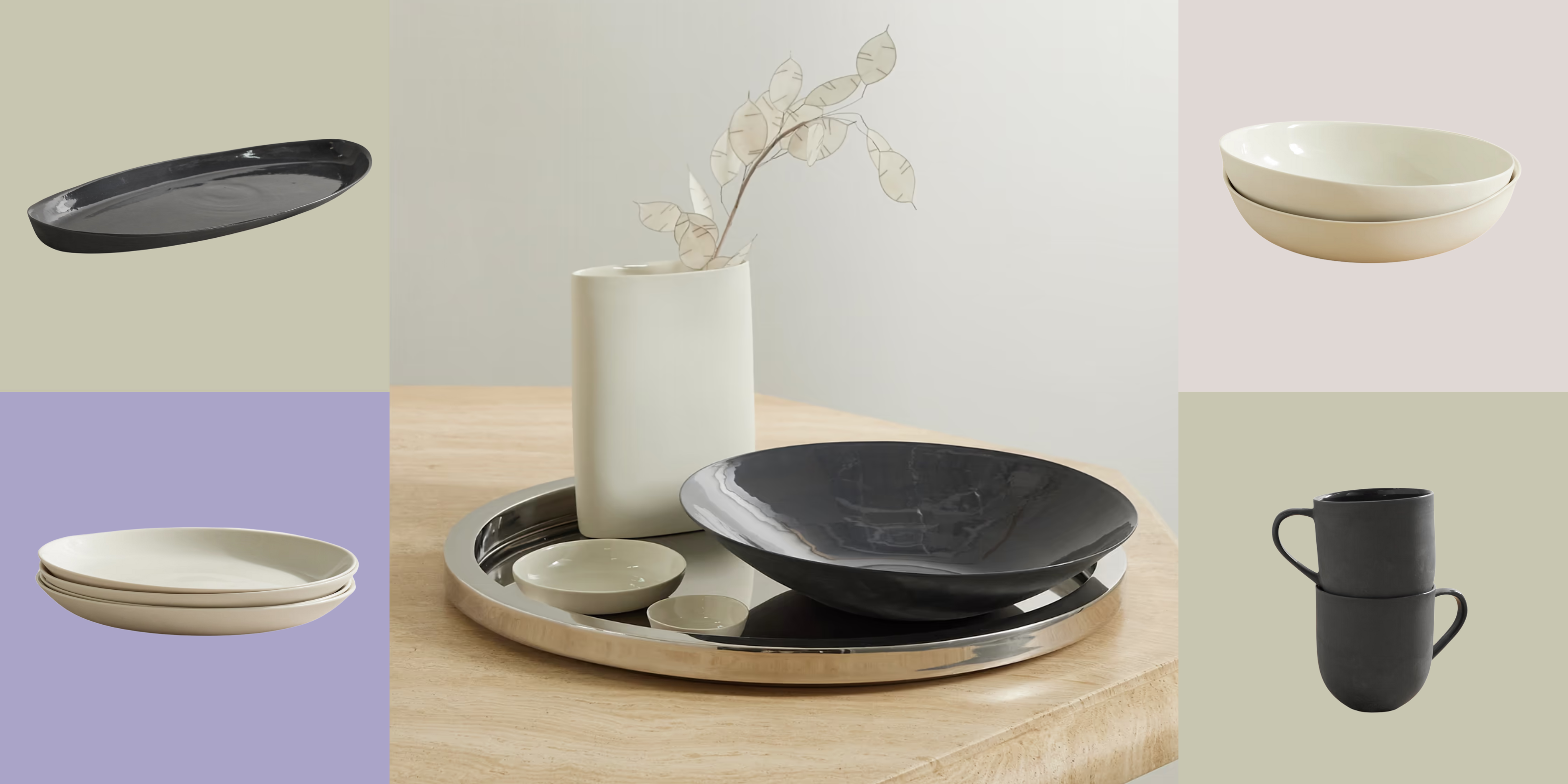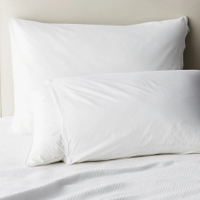Can you wash pillows in a washing machine? Here's what experts have to say
There's nothing better than nestling into a soft, plump pillow at the end of a long day, but will putting them through the wash to clean them work out?


When was the last time you washed your pillow? No, we don't mean your removable pillowcase, we're talking about your actual pillow. Knowing how to keep this integral bedding component clean is key to healthier and more restful sleep, but the chances are you're not washing it regularly enough. All of this begs the question, how do you actually wash a pillow, and can you put them inside your washing machine?
Many of us aren't aware that most pillows are actually safe to go inside your machine. The reality is, quality ones don't come cheap - and we all know the perils of improper laundering - so we decide to avoid the risk completely. And yet, with an average of eight hours of our day spent sleeping on our pillows, sweat, dirt and dead skin cells burrow their way into these slumber supporters over time. (Yes, that's the culprit of those discolored stains...)
There are a few caveats when it comes to washing your pillows in the machine, however. For a start, they require a more gentle setting than your regular laundry. There's also the question of what material your pillow is made of - most down or down alternative pillows will be fine inside your washing machine while more advanced foam options pose a greater challenge when it comes to cleaning.
To help us get to grips with the ins and outs of washing these vital headrests, we've asked some bedding and laundry experts to share their insight so you don't have to risk ruining your best pillows.

Lilith is an expert at following news and trends across the world of interior design. She's committed to helping readers make the best choices in their homes through sharing practical tips and guides for a happier, healthier space. For this piece she asked bedding experts for their advice on whether you can wash a pillow in your washing machine.
Can you wash pillows in a washing machine?

If you've noticed discolored stains while changing your pillowcases, you'll be pleased to learn that most pillows are actually safe to put inside your washing machine. A clean pillow promises better sleep and they're more hygienic too, since dirty bedding can affect our skin.
If you're wondering if yours is machine washable your first port of call should be the instructions on the label, but even without care instructions (if, say, your label has worn off) you can deduce how to clean them based on the material they're made from.
'You can wash many types of pillows in the washing machine on a gentle cycle, including those filled with cotton, feather, down, and fiberfill - but not foam,' says Stephen Light, certified sleep coach and CEO at Nolah Technologies. This is because the dense material of memory foam or latex foam will absorb a lot of moisture which not only makes the pillow difficult to dry but can also misshape it.
Be The First To Know
The Livingetc newsletters are your inside source for what’s shaping interiors now - and what’s next. Discover trend forecasts, smart style ideas, and curated shopping inspiration that brings design to life. Subscribe today and stay ahead of the curve.
Natural goose down feather pillows, Amazon
For an extra fluffy feel, opt for natural, ethically-sourced down feather pillows and reap the benefits of a more blissful slumber (we guarantee they'll have you hitting snooze for an extra ten minutes). These ones use a double fabric lining to prevent the feather filling from sticking out.
'Many pillows stuffed with down, feathers, or a combination of both can go in the washing machine and dryer,' says James Higgins, sleep specialist and CEO of Ethical Bedding. 'You can machine wash and dry most polyester, fiberfill, or down alternative pillows, as their synthetic fibers can handle heat, but you should always use a gentle detergent.'
Although the most common types of pillows are safe to go in the wash, Stephen points out that you'll need to ensure you have a machine with a large enough drum to fit the pillows in. 'A 5kg washing machine drum isn't likely to fit two pillows in, but a 8kg or 12kg drum can carry much much larger drums which will be spacious enough to fit two pillows within it,' he says.
How do you wash pillows in a washing machine? What cycle should you use?

You've found out your pillow is safe to use in the machine, but what cycle should you use? In short, everything should be gentle - that applies to the detergent, temperature, and spin cycle.
'Pillows should be washed on a gentle cycle at an 80F temperature with a low spin, as having the washing machine too hot can cause the pillows to shrink and become deformed,' says Stephen. 'If you don’t have a gentle spin cycle, there may be other cycles such as "delicates" which offer the same soft wash, with little to no spin.'
When it comes to detergent, Stephen suggests that your regular one should be fine, but advises using half your usual load amount. 'I would also recommend using half of your usual softener for every two pillows you wash,' he adds. If you have any deeper stains on your pillows, it is important to pre-treat the affected area before adding it to the washing machine. It's also best to wash pillows by themselves and avoid adding any other laundry since this can cause overload in the machine.
If you have foam pillows, you'll need to resort to spot-cleaning. 'Use a gentle detergent mixed with equal parts water in a spray bottle and a damp cloth,' says James. 'Avoid soaking the pillow, as liquid can damage the foam.' If your pillow has an odor and isn’t machine washable, he suggests tackling it with a mixture of water and white vinegar.
How often should you wash pillows?

We all know how often we should wash our bed sheets, but what about your pillows? Fortunately, they don't need washing as often because your pillowcases protect them (although these ought to be washed at least once a week), however, they do need cleaning more regularly than you probably think.
Both James and Stephen recommend that you wash your pillows every six months to prevent dirt, sweat and dead skin cells creeping inside the filling of your pillow. If you suffer with facial acne or allergies, you might want to make it a more regular routine.
'The best way to keep your pillows clean is to protect them with quality pillowcases that you wash regularly,' James notes. 'I recommend bamboo pillowcases, which are highly durable, moisture-wicking, and naturally antibacterial. You can also opt for pillows that have machine-washable covers built in so you have two machine-washable layers of defence.' A pillow protector will also act as an extra barrier against dirt, reducing how often you need to replace your pillows.
Cotton pillow protector, The Company Store
Keep your pillow fresh for longer using a cotton pillow protector. This extra barrier will prevent sweat, dirt and dead skin cells from penetrating into your pillow's inner filling so you won't have to replace it as regularly. Good for your pocket and the planet!
How should you dry pillows?
There's one vital step in your laundry routine that's yet to have mention - drying. Since pillows are so dense (especially if you prefer the extra soft and fluffy sort), they can be notoriously difficult to dry.
To speed up the process you can use a tumble dryer, but it's best to use a gentle setting. 'For down and feather pillows, be sure to tumble dry on low heat to avoid damaging the filling,' says James.
Polyester and other synthetic down alternatives can withstand more heat, but it's a good idea to stick to a lower setting than usual. 'Place your pillows in the tumble dryer alone and put them on a medium to low heat for 60 minutes,' says Stephen. 'After 60 minutes take them out and check to see if they are dry. If they still feel a little damp then put them in for another 10-15 minutes. One perk of adding your pillows into the dryer is that they will become very fluffy and full once again.'
If the weather is in your favor and your decide to line dry your pillows instead, it's a good idea to hang them the other way after an hour or so. This won't only help them to dry more evenly, but it will keep them in shape.

Lilith Hudson is a freelance writer and regular contributor to Livingetc. She holds an MA in Magazine Journalism from City, University of London, and has written for various titles including Homes & Gardens, House Beautiful, Advnture, the Saturday Times Magazine, Evening Standard, DJ Mag, Metro, and The Simple Things Magazine.
Prior to going freelance, Lilith was the News and Trends Editor at Livingetc. It was a role that helped her develop a keen eye for spotting all the latest micro-trends, interior hacks, and viral decor must-haves you need in your home. With a constant ear to the ground on the design scene, she's ahead of the curve when it comes to the latest color that's sweeping interiors or the hot new style to decorate our homes.
-
 Turns Out, Sustainable Design Can Be Chic, and Net-a-Porter's 'Net Sustain' Curation Is Proof — Here's What I'm Shopping
Turns Out, Sustainable Design Can Be Chic, and Net-a-Porter's 'Net Sustain' Curation Is Proof — Here's What I'm ShoppingFrom the Net Sustain collection, Mud Australia's homeware is not only design-oriented, but eco-focused, too
By Devin Toolen
-
 Before and After — How This Jewel-Box Bathroom Made the Most of Its Proportions With Maximalist Design and a 'Soaking Tub'
Before and After — How This Jewel-Box Bathroom Made the Most of Its Proportions With Maximalist Design and a 'Soaking Tub'This design offers a masterclass on creating a luxurious bathroom that is equally playful and elegant.
By Maya Glantz

